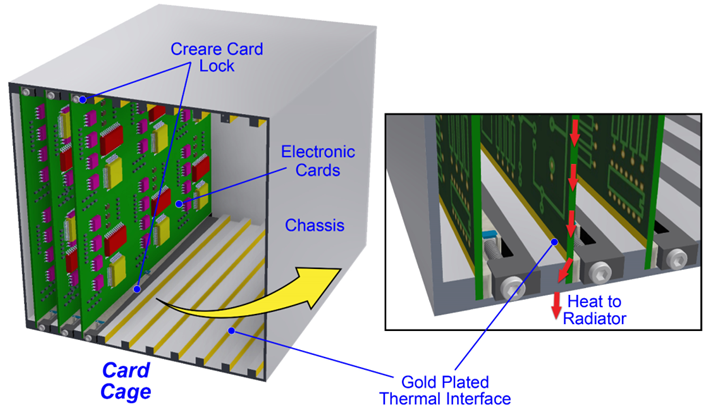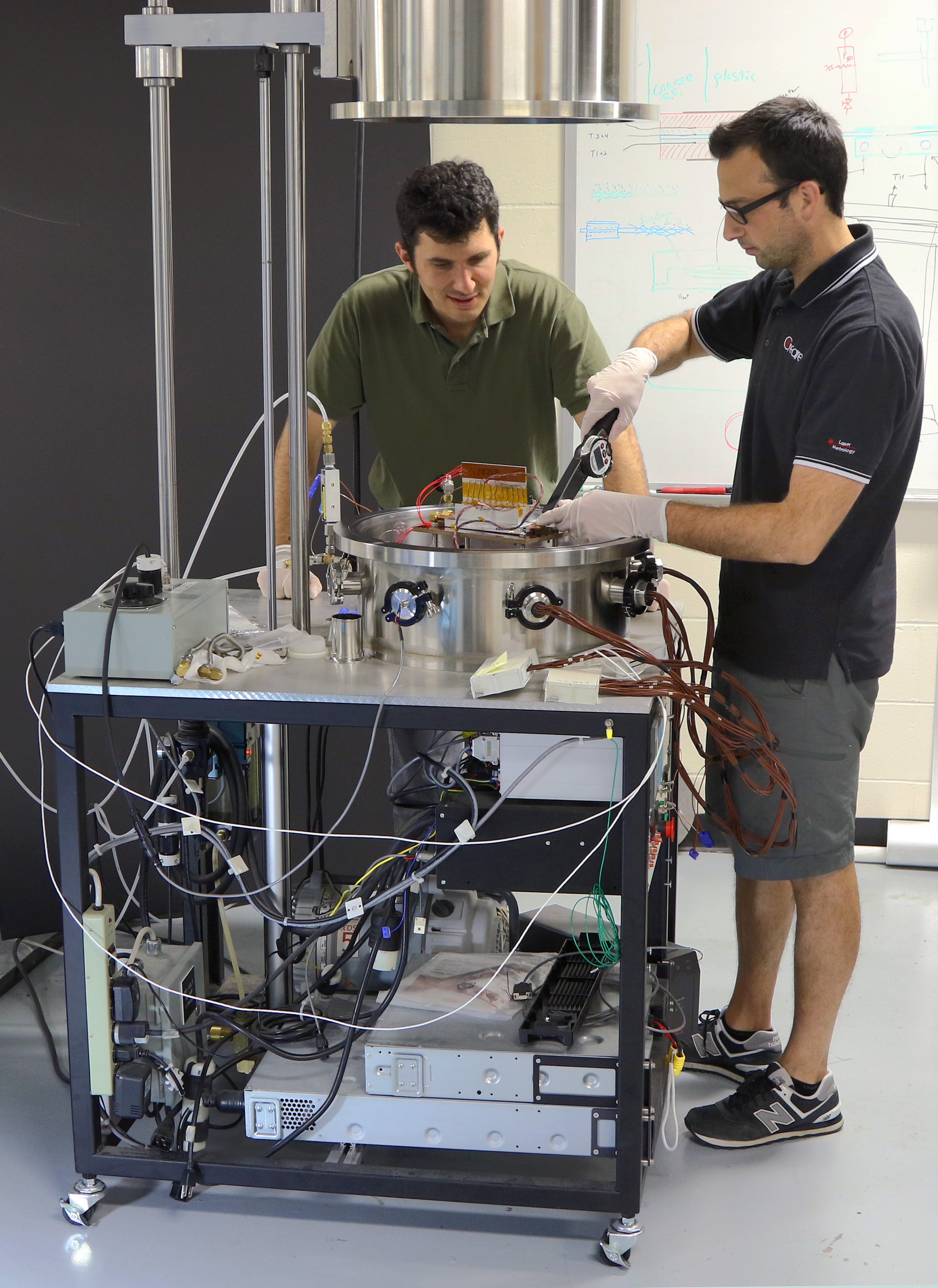Making Electronics Cool Again
Separable Thermal Mechanical Interfaces (STMIs) are found in advanced digital and analog electronics that are used in space and military systems that are sealed, have little airflow, or must operate at high altitudes. An STMI comprises an electronic card, chassis, and card lock; the card lock provides a thermal interface between a printed circuit board and the side wall of a chassis, from which heat can then be removed via convection or radiation.

Typical STMI installation.
Since commercially available card locks are ineffective at removing dissipated heat due to high thermal contact resistance between the boards and chassis, Creare is developing an innovative, drop-in replacement solution. Creare’s advanced card lock increases thermal contact area, increases contact pressure amplitude and pressure uniformity, and minimizes interface separation along the length, all of which result in a significant decrease in thermal contact resistance. Creare’s technology will enable use of more densely populated circuit boards and higher power dissipating components in challenging thermal environments on earth and in space.
Nick Kattamis received his Ph.D. from Princeton University and B.S. from the University of Connecticut, both in Mechanical Engineering. He has worked at Pratt & Whitney, the Naval Undersea Warfare Center, and Hamilton Sundstrand on such projects as control of augmentor acoustic instabilities and finite element analysis routine customization. Some of his projects at Creare include design, development, and testing of a laser-based composite curing system; a portable friction stir welding system for structural repair; an advanced bearing for the electromagnetic aircraft launch system aboard aircraft carriers; and an active magnetic regenerative refrigeration system. In the photo at the top of this page, Dr. Kattamis is preparing to test the STMI in a vacuum bell jar, assisted by Dr. Thomas Conboy.
This story was featured in the Fall 2016 edition of Creare’s People & Technology newsletter.
